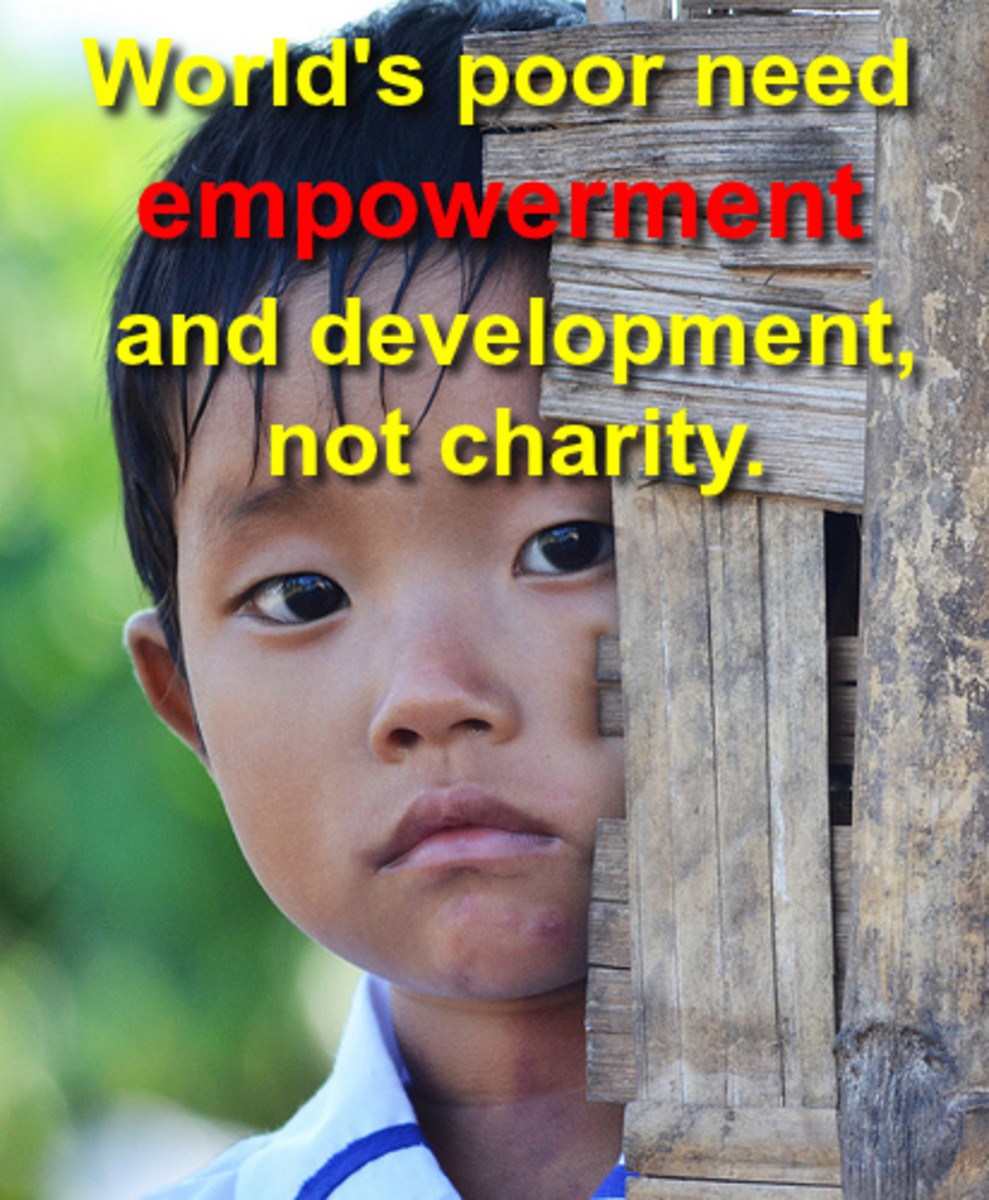Social Equity Model for Employment and Income in Agriculture
I. International Situation
In Asia and Africa, the agricultural areas characterize by subsistence farming with $ 100-150 on average monthly income of poor farmers. The source of income may take in form of the agricultural crops produced, which the farmers including peasants are hired for agricultural work during the planting and harvesting seasons. Although they can used the agricultural crops as the food sources of the family they still experience poverty (including famine and malnutrition) because of the low average income that cannot afford to buy the necessities of life.
The poverty threshold line remained at 80 percent in the impoverished rural areas in Asia and Africa. The growing concerns in poverty in the identified regions resulted to malnutrition, poor sanitation, high mortality and morbidity rate, low standard of living, economic and political exploitations in the society. The national government in Asia and Africa including the international funding agencies provided all the necessary support in the anti-poverty alleviation and pro-poor programs that might end the cycle of poverty in the rural areas.
For almost four (4) decades, the international agencies and national government agencies remained the same development strategies as to the gradual transition of the livelihood and social enterprise (cooperatives) programs, sustainable development programs and etc. into a graphic presentation on the downward cycle with the following characteristics of economic growth:
1) The financial assistance and grants for the development programs have high level of economic and business response to create cash fluidity in the domestic market such as temporary labor employment, infrastructure led enterprise for lumber stores and other businesses. Likewise, the sustainable development programs for the livelihood programs including micro-enterprise programs produce the temporary employment and worthy development projects for the Local Government Units and National Government Agencies.
2) The benchmarking and documentation for this high profile development projects have provided the worthy development programs. After the end of the Memorandum of Agreement, the development programs may in effect find way to local development for the span of two years depending upon the following situation :
a) The organization and management have enough training of capacity building programs from the consultants of the national government and funding agency.
b) There are development facilities and equipment to support the livelihood programs .The project designed for development has been completed on its management cycle.
c) The active participation on its full implementation at the early years of development. There are constant readjustments by the members for the logistics of the enterprise.
Given by exemplary organizational operations on its 1st phase operation for 1-2 years the management of the project development may now foreseeing strategic threats on all spheres :
1) The organizational mismanagement because of the underpinning nature of contextual social scenario of the development project. The main players for the people and women empowerment crystallize the economic reality on an impoverished community.
2) The gradual mismanagement from the recurring financial concerns including credit problems. Management quarrels including organizational positioning and conflicting interest.
3) The “smoke turns to fire” the strategic management concerns the beginning to feel the “organization crunch”. There are two scenarios on the downturn of the development projects; (a ) abrupt management crisis as a result of internal and external conflict arising from the strategic interest and scenario of the organization; and (b) the gradual management decline as a result of the local design of the project.
4) The “signs” degeneration and collapse from the simple to complex strategic problem of sustaining the organization and the gradual drain of financial resources.
II. Subsistence Farming and Contract Growers
The farming areas have all the surplus of agricultural crops. The traders, merchants and businessmen are the commercial traders of the agricultural enterprise. They provided the cash on the payment of the agricultural crops at a low price that are sols in the supermarket and commercial crops.
III. Marketing Product of Surplus Agricultural Crops : Supermarkets, Commercial Centers, Malls and Other Commercial Establishments
The commercialization of the surplus agricultural crops shall have market target in commercial centers, supermarkets, mall and other corporate enterprises. The technical support team shall also review the establishment of social equity section on those aforementioned centers for the sales of all quality products.
The towns or municipalities are core center for the marketing and commercialization on all surplus agricultural crops including the commercial products of the multi-national corporations.
1. Vegetable Section- Eggplants, tomatoes, unions,
2. Poultry Product Section- dressed chicken and eggs
3. Fish Product Section- native fish and dried fish
4. Livelihood and Micro-Enterprise Distribution
a) Furniture Section- handicraft and furniture products.
b) Local Products-tomatoes, dried fish, local wine products, milk products, rice, corn,and local basic commodities.
IV. Product Mix, Segmentation and Marketing System
The Social Equity Management Team shall provide the corporate strategies just like the multi-national corporations on the strategic market position which include the packaging, promotion and pricing mechanism.
The distribution of the agricultural crops is within the technical support by “giving cash or check” on commercial crops.
1. Rice - The commercial translation on the rice packaging .
2. Corn – The commercial provisions of the feeds, aqua-culture and
poultry products.
3. Vegetables – The commercialization of vegetables in the supermarket.
4. Root Crops – The commercialization of the root crops in the
supermarket.
5. Fruit Products – The commercialization of the fruit products
6. Other Potential Crops – The commercialization of other
potential crops.
V. Technical Support Mechanism
The social equity program is the marketing and distribution of the agricultural crops, agri-business, poultry products, animal products and local industries.
- Vicinity Product Marketing at the Supermarket and CommercialCenters- The clustering of input materials and packaging of the products within the radius of the territorial products. These shall be the distribution and sale of the products.
- Trading Centers – Poultry Products, Swine, Goats, Cows and other Animal Products. There is pricing mechanism ( kilogram price system)
- Single Proprietorship Local Industries – The finished products are sold through the Social Equity Enterprise. The local industries shall receive the payment through “Cash on Delivery” (C.O.D.) for the finished products received by the enterprise.
- Social EquityCenter for Quality Control Packaging – The field marketing support team shall for the packaging of the agricultural products and other forest products. After which, the product shall be distributed to the point of destination.
VI. Credit Line Facility Scheme and Contract Grower Support System
The Social Equity Management Team has to provide “contract grower support system.” There is a “credit line facility” to purchase the needed agricultural inputs and materials in the entire process of agricultural production.
These are the common problems of farmers in the production of agricultural crops as they are going to buy the agricultural inputs at a high price. The cost of production is quite high yet the harvest agricultural products are sold to a much lower price.
1. At a minimum 20 percent share of profits on the purchase of agricultural crops from the commercial dealers in agriculture and forest products.
2. At a minimum 20 percent share of profits in buying the agricultural and products to the farmers by traders, middlemen, and commercial dealers.
3. At a minimum 5 percent interest rate per month in the purchase of agricultural inputs.
As a solution o this problem, the Social Equity Management Team provide financial assistance which shall translate to the needed agricultural inputs, including the rent of tractors and other equipment.It shall provide the necessary input agricultural materials such as insecticides or pesticide , fertilizers and etc. These are the common problems of farmers in the production of agricultural crops as they are going to buy the agricultural inputs at a high price. The cost of production is quite high yet the harvest agricultural products are sold to a much lower price.
Find more about the solution of the problem in the “Economic Theory on Social Equity for Employment and Income in Agriculture.”








